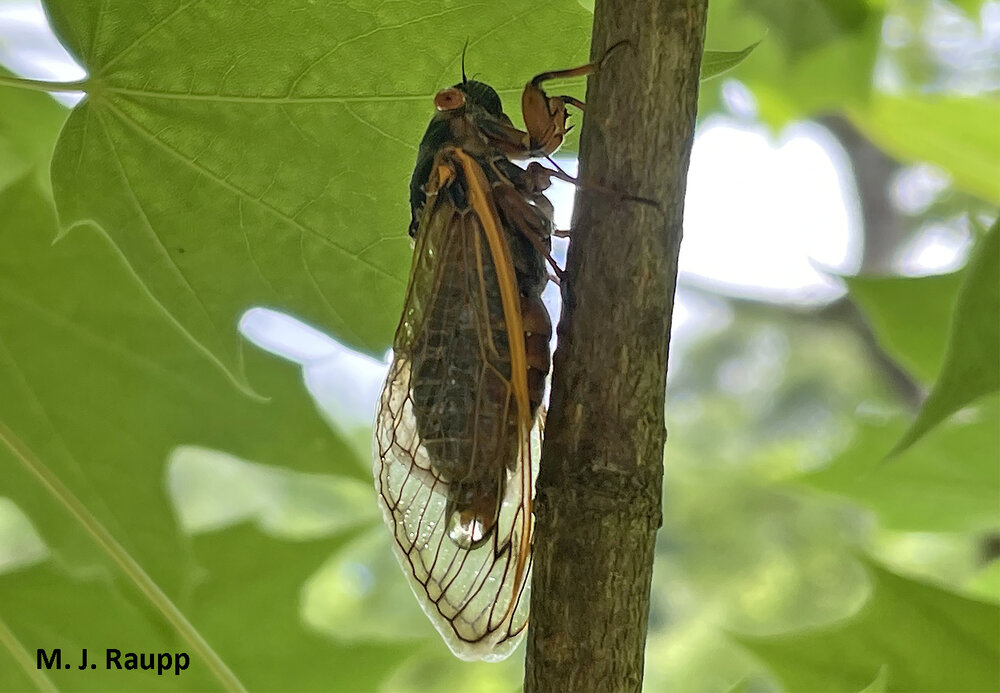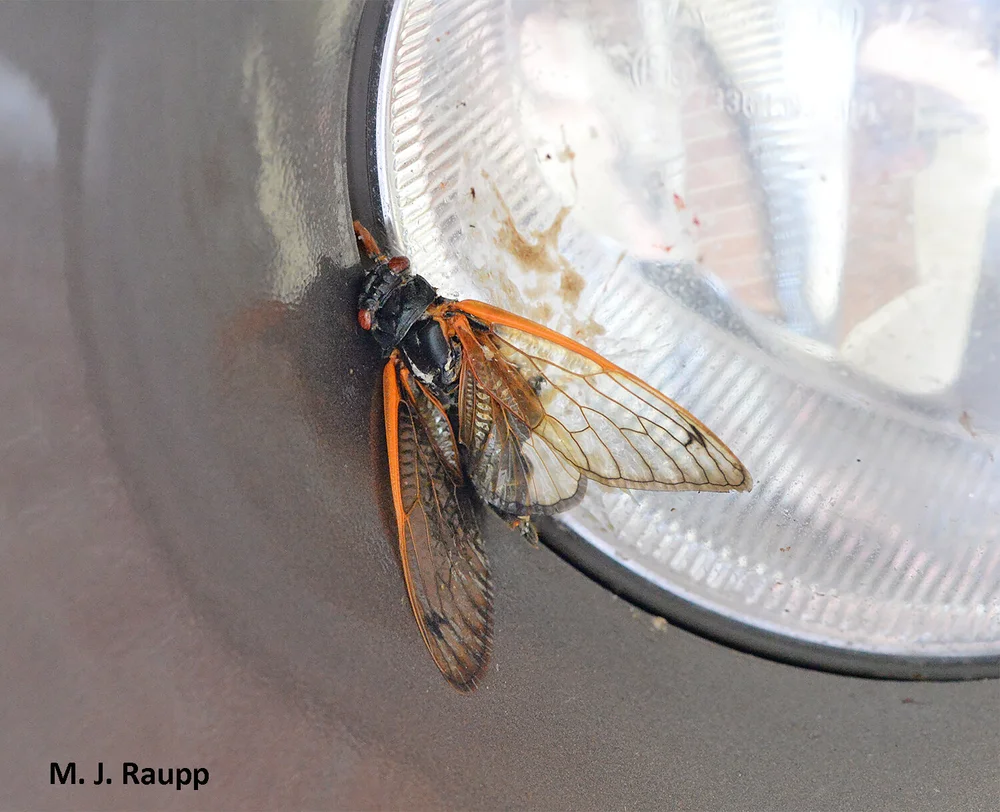Fly, feed, pee: Cicadas, Magicicada species

A droplet of “pee” accumulates just before dropping from the rear-end of a cicada.
This week cicadas have taken to wing, dashing across yards, roadways, and landscapes as they try to hook up with other members of their species. While standing beneath a raucous chorus of Magicicada cassini, a gentle sprinkle wafted down on my head, kind of a summer shower on a hot day provided by the periodical cicadas. Thinking back to John Fogerty’s 1970 lyrical query “I wanna know, have you ever seen the rain, comin’ down on a sunny day”, I mused about what exactly was behind a cicada shower? Recall that cicada nymphs feed on a nutrient poor fluid carried in a vascular tissue called xylem. Developing nymphs process large amounts of this liquid to gain sufficient nutrients to grow. Now consider the needs of the adult cicada. While living a normal life span of two to four weeks, they must mature, find mates, defy death from the jaws of predators, and, for the females, fly to trees to find suitable locations to deposit several hundred eggs. These activities are conducted in sometimes scorching heat that can exceed 90 degrees Fahrenheit. Clearly, cicada adults need some sort of fuel to undertake all these activities in just a few short weeks.
With almost all cicadas up and out of the ground, noisy cicadas are busy flying throughout the landscape to find their brood mates. Hundreds line the trunks and branches of trees to feed and find mates. First at full speed and again at half speed, watch as one female rids herself of liquid waste – a.k.a. cicada pee. Our periodical cicadas produce a gentle shower of pee, but large cicadas of the Costa Rican rainforest can deliver a firehose-like torrent of pee.

For many flying cicadas, the journey ends on the windshield or headlight of a car.
Some common lore has it that adult cicadas do not feed; however, adults do indeed feed. Soda-straw-like mouthparts are inserted into the plant’s xylem vessels and a massive pump in the head of the cicada creates negative pressure to suck xylem fluid from vessels located in tree branches and along the trunk, into the digestive tract of the cicada. Xylem fluid replaces moisture lost from these small creatures as they respire and move about. To survive above ground they process vast quantities of fluid. Their specialized digestive tract enables them to suck copious amounts of sap from trees and then rapidly excrete the excess fluid. “Pee” is a term usually applied to urine, a liquid produced by the kidneys of vertebrates to rid the body of metabolic waste products. Cicadas and other members of the Hemiptera clan produce liquid waste. Specialized organs called the malpighian tubules remove waste products from the hemolymph of the cicada and pass it to the colon for excretion. Sucking insects such as aphids and soft scales feed on another vascular fluid called phloem and produce a waste product called honeydew. This sugar-rich liquid is quite different from that produced by cicadas and other xylem feeders. For periodical cicadas, their liquid waste is not exactly “pee”. However, amidst the Brood X cicada chorus, don’t be surprised if you see and feel rain comin’ down on a sunny day.
Acknowledgements
Bug of the Week thanks Dr. Shrewsbury for inspiring this episode and Randy, ruler of all cicadas, for allowing us to photograph and record cicadas in her beautiful landscape.
This post appeared first on Bug of the Week